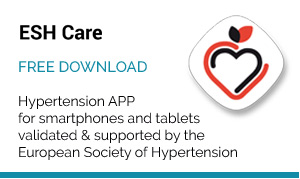June 16, 2007 – Milan, Italy – Persons with the metabolic syndrome have a 2.5-fold higher risk of developing left ventricular hypertrophy (LVH) over 10 years, compared to persons with metabolic syndrome, according to data from the well-known PAMELA study of the general population of Milan, Italy, presented by Prof. R. Sega, Vimercate Hospital, Italy, at the 17th European Meeting of Hypertension. Prospective data on the development of LVH in the setting of metabolic syndrome is lacking.
A total of 1,099 persons from the PAMELA study were stratified for sex and decades of age (25 to 74 years). Office blood pressure, home blood pressure, ambulatory blood pressure, plasma glucose and lipids, and waist circumference were measured. Echocardiographic measures of interventricular septum, left ventricular posterior wall thickness, and left ventricular diameter were obtained to determine the LV mass index (LVMI). Measurements were performed a decade apart, with the first measures in the early 1990s.
Using the 2003 ATP criteria, 12.5% of the population had the metabolic syndrome. Of the persons with metabolic syndrome, 48% developed, compared to only 20% of those without metabolic syndrome (p<0.0001). A 2.6% higher age- and sex-adjusted risk of LVH was found in persons with metabolic syndrome (p<0.0001).
Baseline LVMI, age, waist circumference, cholesterolemia, and office systolic blood pressure, in rank order, were the strongest independent predictors of LVH on multivariate analysis.






